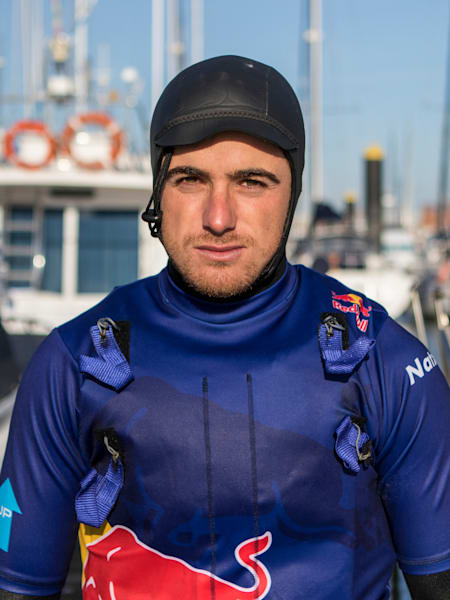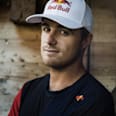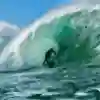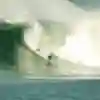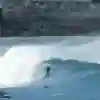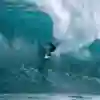The adrenaline rush from just 30 seconds surfing the perfect wave can make Natxo González’s year. So when the 25-year-old heard the borders to Mexico were open and huge ocean swells were expected in Puerto Escondido – his favourite spot – he grabbed his boards, collected his things and jumped on a plane.
“These times have been so hard for us, we couldn’t travel and at home we couldn’t drive around to search for waves,” says González.
“Now the season of massive waves is starting here in Puerto Escondido. The days have been really intense, non-stop big wave surfing and training every day for six hours. I am so stoked to be here.”
Completely reliant on the wind and the waves, the world’s elite big wave surfers are masters of patience and acceptance, but also always ready to act fast when the moment is right – skills many of us have had to learn over the past year.
“Some people tell me ‘you're crazy to go to Fiji for just one day’, but there are not many times when the sea gets that big. You have to be there when it does,” he explains.
“You have to be ready with all your stuff, have all the logistics sorted out and get a plane straight away. It is pretty intense when it happens.”
As González waits in Mexico, he also depends on experts like Kevin Wallis at specialist forecasting service Surfline in California. Wallis provides the data and analysis that determines whether the world’s biggest surfing events can take place.
Picking that one day you want to run can be like picking out a needle from a haystack
“We use a combination of things – a sea surface pressure chart, which shows where the storms are in the ocean or in a big body of water and how strong the wind will be. But then once the storms actually happen we are doing remote sensing with satellites, for example, measuring the wind within a storm, or wave heights within a storm and comparing that with our computer models,” says Wallis.
“Depending on the spot you could be looking at data from hundreds or thousands of miles away. At Puerto Escondido, in southern Mexico, the majority of swells that we are really interested in have been coming from somewhere deep in the South Pacific, 4,000 or 5,000 miles away.”
He advises on whether the conditions will likely be right for an event to go ahead at a few days notice, but even then the local winds can change on the day itself and completely change the picture.
“Picking that one day you want to run can be like picking out a needle from a haystack in a lot of ways,” he says.
“At a world championship tour event, people might want different types of conditions to surf, which will suit their particular strengths. Everybody has got an opinion and the best we can do is provide the best information possible and say this is how we see it and why… the race organiser has the tough call.”
González and his peers have adapted to the uncertainties and take them in their stride.
“There are some sessions where you can be in the water for six hours but you only get one wave or, if you are lucky, three waves," says the Basque shredder. "You have to calculate perfectly the waves you can get and not make any mistakes, because your life is at stake. There is no opportunity to make mistakes with those kind of conditions.
“You have to be patient and not panic. Here in Puerto especially, it is a big beach break, there are waves everywhere, there is no channel to be safe, so you have to learn and study the conditions pretty well to go. There are some days when you don’t get a single wave, but you learn as a person and as a surfer to be patient and that the queen [wave] is going to come for sure one day.”
Then you need to be ready.
“You are waiting for hours for one wave and then you get 30 seconds of a crazy wave, crazy fast," reveals Gonzaléz. "The intensity of that 30 seconds is worth it for all of us! One wave can make your trip, make your career, it is the highlight of the year. The feeling, that adrenaline… that is why I travel around the world.”

